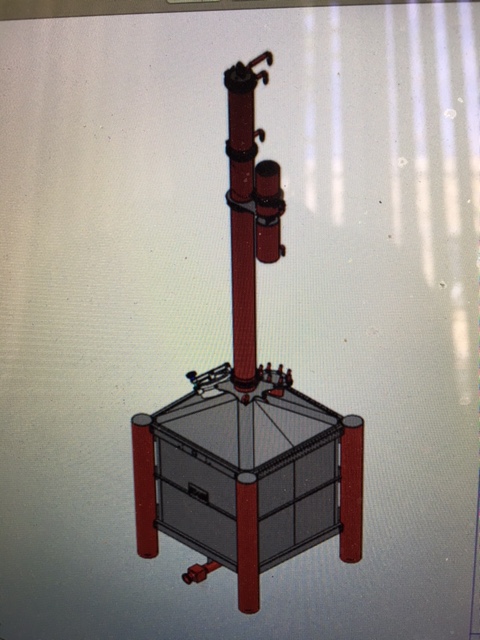Total Column Optimization!
30 April 2017
Introduction
A little over a week ago, we introduced you to how Odin's Advanced Distillation Theory helped iStill develop units that outproduce the old models by 56%. If you didn't read that post, please do. It helps introducing what comes next. Here it is:
https://istillblog.wordpress.com/2017/04/14/bigger-is-better-1/
And what comes next? Well, as we hinted on in the above post ... optimized column design! Let's see how - over the last year - we have further improved the iStill NextGen, so we can now bring products to the market place that outproduce the old ones not by 56%, but by 100%. Yes, twice the production rate!
Column Design
The previous post showed how a bigger diameter column helps create a massive improvement in both separation power and production capacity. We also touched on how taller columns - contrary to lore of old - can actually help produce more liters of spirits per hour. Especially for pure products, like vodka and light rum and GNS. So, in the last year, we decided to make our columns a little bit taller. Just a bit, but enough to facilitate the larger production rates we are looking for!
Pull vs. Push
Another misconception about still design: "The boiler creates vapors that are pushed into the column". Yeah, it's unfortunately true for pretty much all other designs out there, but that doesn't make it good. In fact it is bad, very bad.
A push model, where boiler energy input pushes gases into the column, leads to a choke model. The column isn't constantly fed with gases but now faces swings in terms of the amount of gases offered to the column. Over and under pressure is the logical consequence, and that leads to changes in vapor speeds, that hamper both concentration (of alcohol) and separation (between heads, hearts, and tails).
That's why iStill - and this is unique - chooses a pull model. The assumption here is not that the boiler pushes gases into the column, but that the column cooler cools gases back to liquid state. The phase shift from gases being cooled to liquid results in a 1,300 times smaller total amount or content. Say, for example, that there is 13 liters of gas in a column, by the moment this amount of gas reaches the column cooler at the top of the column, it is cooled back to just 0,01 liters of spirits. The collapse of 13 liters of gases to 0,01 liter of liquid creates suction power at the top of the column.
In a well designed still, the column cooler pulls - by means of suction power and based on gas to liquid collapse - gases into the column. The advantage? A more steady gas stream, with equal vapor speeds, resulting in easier concentration of the alcohol content and in better separation of heads, hearts, and tails.
What we did to further improve the performance of the iStills NextGen? We beefed up the cooling capacity of the column cooler by 100%. The redesign also lead to a drop in air resistance (gas resistance, actually) to further help stabilize vapor speeds.
In-depth Bottle-neck Analysis and Re-design
With the bottle-necks in column diameter, height, and column cooling capacity solved, we now turned to what has been the most painstaking part of the improvement process: in-depth bottle-neck assessment. We had already indicated and improved the major constraining factors in the column, but we knew we could gain more if we dived in deeper.
Careful friction analysis taught us that we could still make some improvements to the spirits collection system. Less friction for better performance. We ended up redesigning the whole collection unit, but boy does it pay out!
With the gas trajectory and collection system now fully optimized, the next step we undertook was to look deeper into the liquid trajectories inside the iStill. Better liquid extraction frees up more space for the liquids that come over later. And when one takes away (potential) choking points in the liquid trajectory as well (liquid collection unit, robot, product cooler, and heads/hearts/tails separator unit), again huge performance benefits can be reaped.
What we did? Well, where the old robot had an opening of a maximum of 3 millimeters, creating a huge bottle-neck in the liquid trajectory, we now have a robot that opens up to 10 millimeters. We now also have a sloped liquid collection unit to help rush the liquids out of the column. And we beefed up the capacity of the product cooler (by 50%) as well as the heads/hearts/tails separator unit (by 60%).
Results, please?
Yes, here they are:
- In potstill mode, when making taste rich product, there is now a total improvement in spirits production of 66%;
- In pure mode, when making vodka for instance, the above innovations help boost production by 100%.
- We receive your email no later than May 5th 2017;
- You sign and return the quotation/contract within a week of reception;
- You pay the downpayment within a week of receiving the invoice that follows on the signed quotation/contract.
PDF of the iStill 500 NextGen with fully optimized column ...

www.iStill.eu
Reactions
Add your comment
All reactions ()
Loading comments..